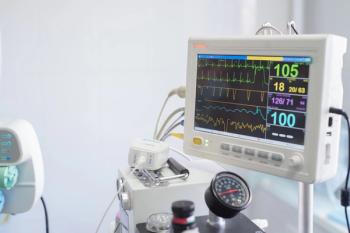
Management of adolescents with gender dysphoria
Patients with GD are increasingly likely to present for care, and ob/gyns should be familiar with the latest management guidelines.
Dr Jarin is Fellow, Pediatric and Adolescent Gynecology, Washington Hospital Center, Washington, DC.
Dr Gomez-Lobo is Director, Pediatric and Adolescent Gynecology, Washington Hospital Center, Washington, DC.
Gender dysphoria (GD), formerly “gender identity disorder,” is defined in the Diagnostic and Statistical Manual of Mental Disorders (DSM-5) as a condition encountered in people whose sex at birth (their “assigned gender”) is contrary to the gender with which they identify (their “affirmed gender”).
The psychiatric focus is on the distress experienced due to the incongruence between assigned and affirmed genders. Current evidence supports that gender-affirming therapy greatly improves outcomes.1 The American Psychiatric Association further states that such individuals should be able to obtain care without fear of discrimination and that treatment options for this condition include counseling, cross-sex hormones, gender reassignment surgery, and social and legal transition to the desired sex.1
In 2009, the Endocrine Society, along with the Pediatric Endocrine Society, World Professional Association for Transgender Health (WPATH), European Society of Endocrinology, and the European Society for Pediatric Endocrinology, published “Endocrine treatment of transsexual persons: an Endocrine Society clinical practice guideline.”2 Since then, an increasing number of children and adolescents have received treatment for the condition.
It is important for general gynecologists to be aware of the current recommendations as well as long-term management of these adolescents as it is likely that they will encounter these patients in their practice.
Psychological evaluation
For children and adolescents who present with GD, evaluation and management by a mental health provider with experience in child development and gender identity are essential. The mental health provider will assess whether the child indeed qualifies for the diagnosis and for confounding psychological factors and family support, provide psychotherapy, and evaluate the child’s psychological readiness for medical interventions such as puberty blockers and/or cross-sex hormones.
Children and adolescents with GD are at risk of bullying and social rejection and are at high risk of adverse mental health outcomes including anxiety, depression, self-harm and suicide, poor school performance, and drug and alcohol abuse.3 Thus, the mental health provider should continue to evaluate and support the child during social and biological transition.
Puberty suppression
Some children with GD experience increasing distress during puberty as their body begins to change. The Endocrine Society guidelines support the use of puberty blockers starting when a child reaches Tanner 2 stage of puberty (breast budding in girls and testicular volume of 4 cc in boys).
The mental health provider should assess whether the patient meets DSM-5 criteria for GD and provide a letter of support for the pediatric endocrinologist or gynecologist to begin puberty blockers.2 Such treatment not only addresses the child’s mental distress but also prevents development of secondary sexual characteristics that may later be difficult to alter, such as the Adam’s apple or large breasts.
In general, puberty suppression is achieved with gonadotropin-releasing hormone agonists (GnRH) such as a Histrelin rod or Depo-Lupron. If insurance does not cover the costs of these medications, Depo-Provera (depo medroxyprogesterone acetate) can be utilized after appealing to the insurance provider for reimbursement.
Given their experience with administration of injectable contraceptives and hormonal implants, gynecologists are in a unique position to initiate puberty suppression, as placement of the histrelin rod is similar to placement of the etonorgestrel contraceptive implant.
Puberty suppression is considered completely reversible but may have adverse effects (AEs) on final bone mineral density (BMD), an outcome that has not been well studied.3 The Endocrine Society guidelines recommend annual testing for BMD and bone age. Evaluation of gonadotropin (LH/FSH) and testosterone/estradiol levels, height and weight measurements, and Tanner staging should be performed every 3 months.2
Cross-sex hormones
Regardless of whether puberty is suppressed, the Endocrine Society guidelines support initiation of cross-sex hormones around age 16. Physicians should extensively counsel adolescents who are considering cross-sex hormones and their families regarding the expected results of feminizing/masculinizing medications and their possible AEs. Discussions should include the effects on fertility and options for fertility preservation.
Prior to initiation of cross-sex hormone therapy, the WPATH recommends that a mental health professional provide documentation (such as a referral letter) about the patient’s personal and treatment history, DSM-5 eligibility, and need for cross-sex hormone therapy. Health professionals who recommend hormone therapy share the ethical and legal responsibility for that decision with the gynecologist who provides the service.3
In some cases, parental consent may not be required; however obtaining it is preferable because parental support improves clinical outcomes during hormone therapy.4 Of note, a patient’s goals need to be discussed often as he or she matures, as puberty suppression does not inevitably lead use of cross-sex hormone therapy or surgery.5 While surgical transition is an important (and expensive) component of gender affirmation, puberty suppressing and cross-sex hormone therapy serves as the endpoint to transition for many people.
Testosterone treatment for female-to-male (FtM) adolescents
Hormone therapy for adolescents with GD who have received puberty suppression differs considerably from therapy for adults, largely because it involves induction of puberty.
Testosterone is generally administered intramuscularly or subcutaneously. Other methods (creams and patches) are not as widely prescribed because data are limited regarding their use for puberty induction. Testosterone esters are often administered every 2 to 4 weeks at the onset of induction, with a dosage goal set as the lowest dose needed to maintain the desired clinical result.3 This requires discussion not only of the risks of masculinizing hormone therapy but also of the timing of the desired effects so the adolescent has reasonable expectations (Table 2).
Following completion of puberty induction, the Endocrine Society recommends maintaining testosterone levels within normal male physiologic levels (320–1000 ng/dL). Monitoring for AEs includes both clinical and laboratory evaluation specific to the risks of hormone therapy and the patient’s individual risks/comorbidities (Table 2).6 Unintended pregnancies have occurred in transgender men receiving testosterone, so contraceptive needs should be addressed, especially with older adolescents.7
Estrogen treatment for male-to-female (MtF) adolescents
Hormone therapy for adolescents who desire feminizing therapy is more complex. Most clinical studies report concurrent use of antiandrogens with estrogen therapy if the patient has not undergone puberty suppression.8 Puberty induction, in suppressed patients, may be undertaken with oral estrogen as well as transdermal (patch) and parenteral formulations. The risk of venous thromboembolism (VTE) is lower in adolescents than in adults and transdermal preparations may lower the risks further.3
Following puberty induction, serum estradiol should be maintained at premenopausal levels (<200 pg/mL) and testosterone should be in the physiologic female range (<55 ng/dL). In individuals who have experienced native testosterone-induced puberty, this treatment may require high doses of estradiol (2–6 mg) as well as androgen blockers such as spironolactone. As with testosterone therapy, regular clinical and laboratory assessment should be performed to monitor for AEs. Suggested protocols for monitoring can be found in Table 2.
Long-term considerations
While gender-affirming hormone therapy provides many adolescents relief from GD, many others consider surgery essential to fully transitioning to their desired gender. The Endocrine Society recommends that surgery be deferred until age 16 for breast reduction and 18 for other surgical procedures, when adolescents have had sufficient social transition following cross-sex hormone therapy.
Available surgical interventions include breast (“top”) surgery, genital (“bottom”) surgery, gonadectomy, facial or other plastic surgery, and hysterectomy with or without bilateral salpingo-oophorectomy. The Endocrine Society guidelines recommend hysterectomy to eliminate the risk of reproductive tract diseases as this population may not seek proper screening (Table 3).
The gynecologist is important in this stage of transition not only because of surgical expertise but also because of the need for extensive counseling regarding the risks of a hypogonadal state and of hormone replacement. Due to increased risk of VTE in people receiving estrogen, this therapy is often discontinued the month prior to any major surgical procedure.3 There is anecdotal evidence that testosterone therapy may be associated with increased surgical bleeding. Therefore, treatment is often stopped prior to surgery. As adolescents transition into adulthood, they should undergo regular medical screening based on their current anatomy and age.
Despite growing awareness of transgender issues in the medical community, marginalization of transgender individuals remains widespread.9 Furthermore, transgender youth comprise a disproportionate portion of the homeless population, limiting their access to medical and psychiatric care.10 Healthcare providers need to create a welcoming clinical environment for transgender patients. Changes to intake forms to include sexual minorities and using terms such as “relationship status” instead of “marital status” will help patients feel comfortable about their gender identity and expression.11
It is important to discuss sexual orientation apart from gender identity and assess for pregnancy as well as sexually transmitted infections. Female-to-male patients who maintain their cervix should undergo cervical cancer screening. No data exist regarding vaginal cancer screening male-to-female individuals who have opted for genital surgery and creation of neovaginas; however annual visual inspection is a reasonable
approach.12
REFERENCES
1. American Psychiatric Association. Diagnostic and Statistical Manual of Mental Disorders. 5th ed. Arlington VA: American Psychiatric Association; 2013.
2. Hembree WC, Cohen-Kettenis P, Delemarre-van de Waal HA, et al; Endocrine Society. Endocrine treatment of transsexual persons: an Endocrine Society clinical practice guideline. J Clin Endocrinol Metab. 2009;94(9):3132–3154.
3. World Professional Association for Transgender Health (WPATH). Standards of Care for the Health of Transsexual, Transgender, and Gender-Nonconforming People. 7th Version. 2012.
4. Delemarre-Van de Waal HA, Cohen-Kettenis PT. Clinical management of gender identity disorder in adolescents. Eur J Endocrinol. 2006;155 Suppl 1:S131-S137.
5. Olson J, Garofalo R. The peripubertal gender-dysphoric child: puberty suppression and treatment paradigms. Pediatr Ann. 2014;43(6):e132-137.
6. Feldman J, Safer J. Hormone therapy in adults: Suggested revisions to the sixth version of the standards of care. Int J Transgenderism. 2009;11(3):146–182.
7. Light AD, Obedin-Maliver J, Sevelius JM, Kerns JL. Transgender men who experienced pregnancy after female-to-male gender transitioning. Obstet Gynecol. 2014;124(6):1120-1127.
8. Gooren L. Hormone treatment of the adult transsexual patient. Horm Res. 2005;64 Suppl 2:31-36.
9. Health care for transgender individuals. Committee Opinion No. 512. American College of Obstetricians and Gynecologists. Obstet Gynecol. 2011;118:1454–1458.
10. Mayer K, Bradford J, Makadon H, Stall R, Goldhammer H, Landers S. Sexual and gender minority health: what we know and what needs to be done. Am J Public Health. 2008;98(6):989–995.
11. Gay and Lesbian Medical Association. Guidelines for care of lesbian, gay, bisexual and transgender patients. Washington, DC. 2006.
12. Kita Y, Mori S, Baba K, et al. Mucinous adenocarcinoma emerging in sigmoid colon neovagina 40 years after its creation: a case report. World J Surg Oncol. 2015;13:213.
Newsletter
Get the latest clinical updates, case studies, and expert commentary in obstetric and gynecologic care. Sign up now to stay informed.
















